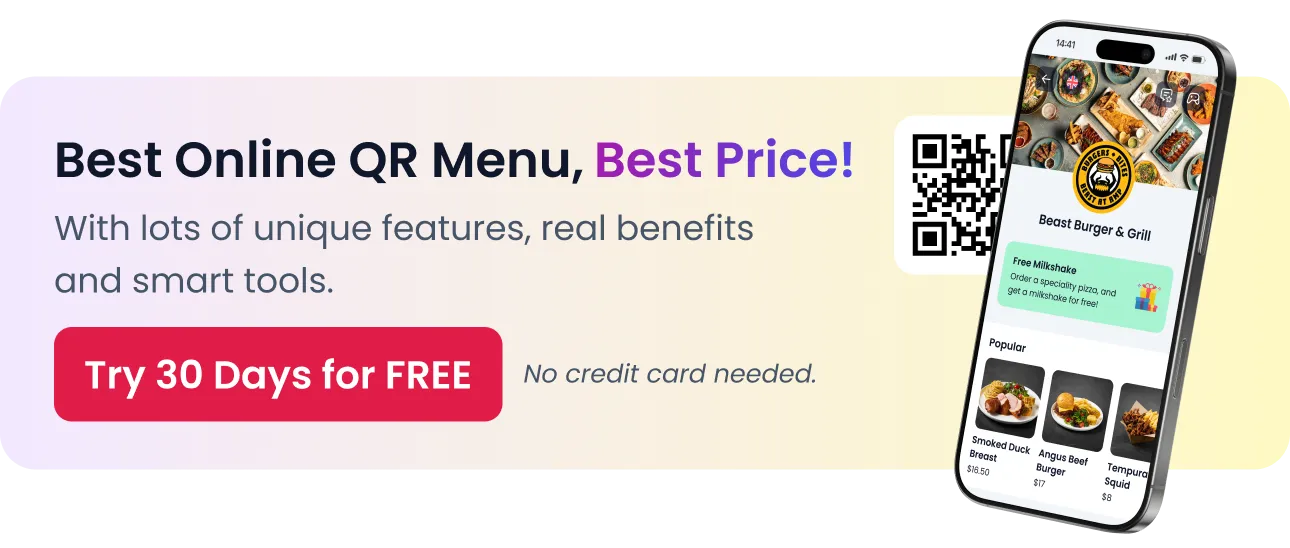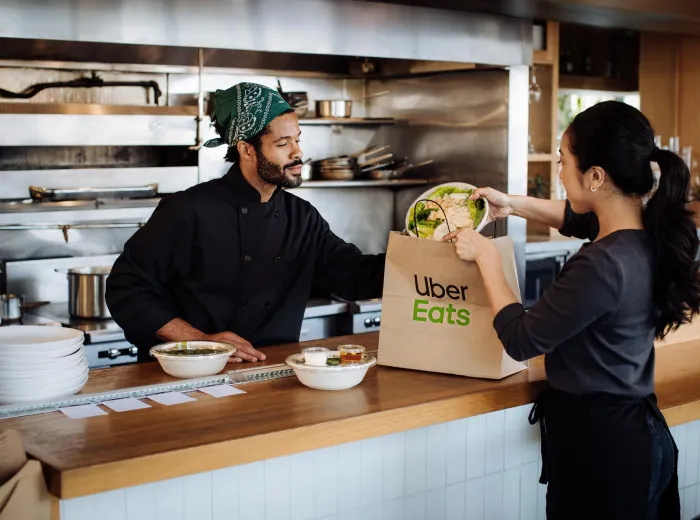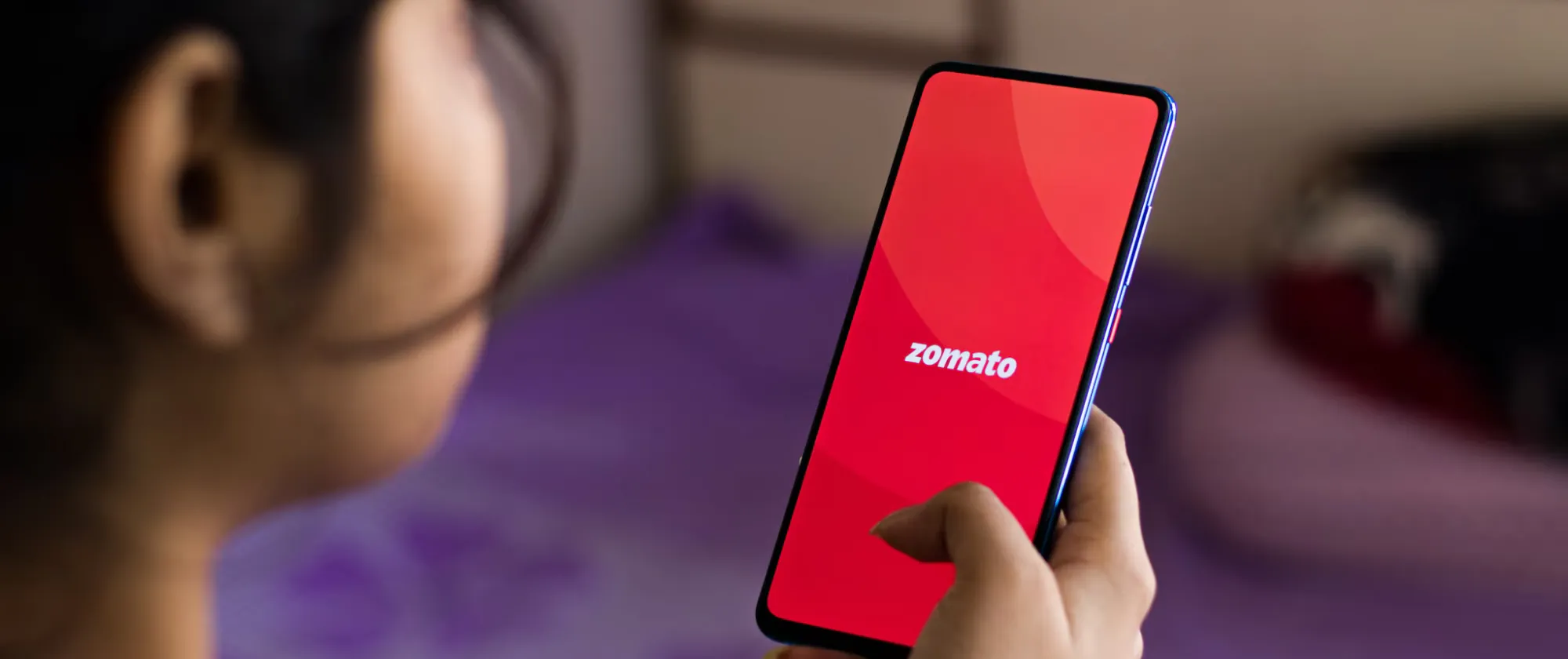
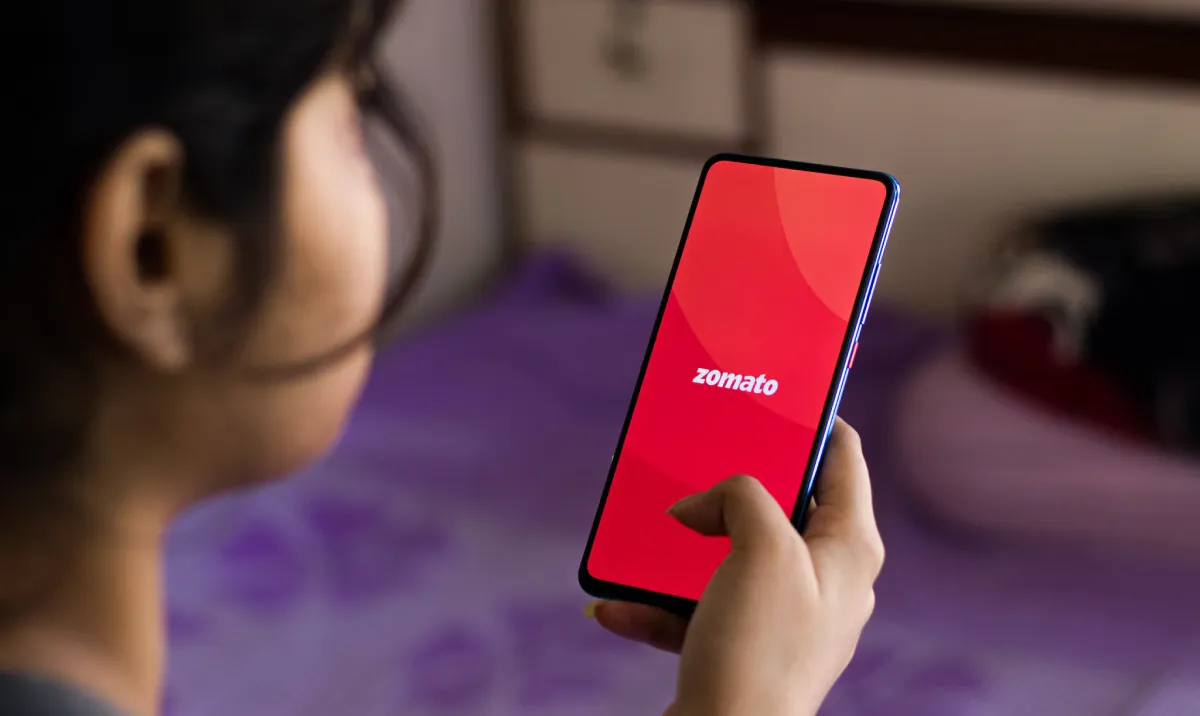
How to Increase Orders on Zomato? | Tips for Restaurants
In today’s ultra-competitive food delivery landscape, simply listing your restaurant on Zomato isn’t enough. With hundreds of similar options just a scroll away, standing out takes strategy, consistency, and a deep understanding of how the platform works. The good news? Zomato offers a variety of tools and features that, when used right, can significantly increase your visibility and order volume.
Whether you’re a small cloud kitchen trying to build momentum or an established restaurant looking to boost your delivery sales, this guide will walk you through practical, actionable steps. We’re not just talking about running discounts or hoping for good reviews — we’ll cover how to optimize your digital menu, make smart use of promotions, streamline operations, and use analytics to your advantage.
Let’s break down how you can turn Zomato into a consistent and profitable sales channel for your restaurant — one smart move at a time.
Understanding Zomato’s Ranking and Visibility System
To increase your order volume on Zomato, you first need to understand how the platform decides which restaurants get seen — and which don’t. Visibility on Zomato is driven by a combination of relevance, performance metrics, user behavior, and paid boosts. The system is designed to surface listings that are most likely to deliver a great experience for users. That means consistency, quality, and engagement matter just as much as pricing or photos.
Let’s break down the core elements that affect your restaurant’s ranking and visibility on the Zomato platform.
What influences Zomato search rankings?
Zomato uses several key factors to determine which restaurants appear higher in a user’s search results:
- Relevance to keywords – How well your name, cuisine tags, and menu match what users are searching for.
- Ratings and review quantity – Higher-rated and frequently-reviewed places gain more trust and exposure.
- Delivery speed and reliability – Zomato promotes listings that consistently deliver quickly and without issues.
- Order volume and consistency – Restaurants that get more frequent orders are favored, especially those with steady performance over time.
- Deals and discounts – Listings with compelling offers or Zomato Gold participation may be given a boost.
The ranking is dynamic — meaning it can shift daily based on your current performance and customer interactions. That’s why ongoing optimization is critical.
Zomato’s algorithm basics (explained simply)
At its core, Zomato’s algorithm is designed to balance user satisfaction with revenue generation. It considers:
- Customer preferences and history – Returning users are more likely to see restaurants they’ve ordered from or browsed before.
- Recency of performance – Recent 5-star reviews and order reliability have more impact than older performance data.
- Promotional participation – Restaurants running Zomato Ads or platform deals are likely to get higher placement, especially during peak hours.
Think of the algorithm like a feedback loop. The more you deliver good experiences and engage with the platform, the more Zomato rewards your listing with visibility — which in turn drives more traffic and orders. Understanding this loop helps you stay in control of your position on the app.
Optimize Your Menu for More Conversions
Your Zomato menu isn’t just a list of dishes — it’s your online storefront. It’s the first (and often only) impression potential customers will have of your food before they decide to order. A well-structured, visually appealing, and strategically priced menu can significantly improve conversion rates. If users are landing on your listing but not ordering, your menu might be the reason.
Let’s break down how to make your menu work harder for you and turn more views into confirmed orders.
Clean structure and item categories
Make it easy for customers to find what they’re craving by organizing your menu into intuitive, appetizing sections.
- Group similar items (e.g., “Burgers & Sandwiches”, “Curries”, “Family Meals”)
- Highlight high-margin or popular dishes in a “Recommended” or “Best Sellers” section
- Avoid clutter — 5–7 items per category is ideal
- Keep it scroll-friendly; customers shouldn’t feel overwhelmed
A clean structure enhances user experience and increases the likelihood that customers will explore more of your offerings.
Descriptions that sell
Don’t leave customers guessing. A well-written menu item description can tip the decision in your favor.
- Include key ingredients and preparation styles (e.g., “tandoor-roasted,” “creamy tomato base”)
- Add flavor cues like “spicy,” “mild,” or “sweet & tangy”
- Mention portion sizes or who it serves (e.g., “serves 2” or “ideal for lunch”)
- Keep it brief but informative — 1 to 2 lines is plenty
Strong descriptions not only help customers make confident choices but also reduce complaints due to unmet expectations.
Images that boost clicks
Photos are not optional — they’re essential. Visuals drive emotional responses and can directly increase conversion rates.
- Upload clear, high-resolution real photos of your food
- Focus on best-sellers and combo items
- Use consistent lighting and plating style to build brand identity
- Avoid adding too many filters or over-editing
If your competitors have mouthwatering visuals and you don’t, you’re already at a disadvantage. Good photos can be the deciding factor between your dish and someone else’s.
Pricing strategy
Pricing plays a psychological role on delivery platforms — it’s not just about affordability.
- Benchmark prices against similar restaurants in your area
- Consider offering small, medium, and large sizes for key dishes
- Create combo meals that offer value while increasing average order size
- Use round pricing (e.g., ₹199, ₹349) to appear more approachable
Customers are often more comfortable ordering when they feel they’re getting value — even if they’re spending more overall.
By structuring your menu well, using compelling descriptions, adding high-quality photos, and pricing smartly, you significantly improve your chances of turning Zomato browsers into loyal customers. Your menu is your silent salesperson — make sure it’s closing the deal.
Use Zomato Promotions Strategically
Running promotions on Zomato can quickly drive attention and boost order volume — but only if they’re used wisely. Too many discounts can damage your margins and train customers to only order when there’s a deal. Instead, think of promotions as tactical tools to increase visibility, fill slow hours, or introduce new items. The key is balance and intentionality.
Here’s how to approach Zomato promotions like a pro, not just another restaurant burning cash for a few short-term spikes.
Zomato Gold vs. Platform Discounts
Zomato offers different promotional tools — each with its own pros and costs:
- Zomato Gold (Dining + Delivery benefits)
- Attracts loyal, deal-seeking users
- May require deep discounts or free items
- Better for high-margin dishes or drinks
- Attracts loyal, deal-seeking users
- Flat percentage discounts (e.g., “30% off above ₹299”)
- Common and effective but can reduce profits
- Useful during off-peak hours or launch periods
- Common and effective but can reduce profits
- Free delivery or item-based deals
- Example: “Free dessert on orders above ₹499”
- Can boost cart size without reducing core item prices
- Example: “Free dessert on orders above ₹499”
Choose based on your goals. If your margins are tight, avoid deep platform-wide offers and opt for targeted time-bound ones instead.
Smart use of time-bound offers
Time-sensitive deals can fill empty windows and reduce staff idle time — without cannibalizing full-price peak orders.
Examples of smart timing strategies:
- “20% Off Lunch Combos – Mon to Fri, 12–3 PM”
- “Evening Snack Deal – Flat ₹50 Off, 4–6 PM”
- “Sunday Family Feast – Combo for 4 at ₹999”
Targeting slow hours helps balance your kitchen workload and maximizes fixed costs like rent and labor.
Bundles and combos that actually work
Customers love perceived value — and combos give you a way to upsell without sacrificing too much margin.
Effective combo examples:
- Main + Side + Drink: e.g., Burger + Fries + Coke at a fixed price
- 2-for-1 Meals: Especially for Indian dishes or Chinese mains
- Meal-for-2 or Family Packs: Great for households ordering in
Keep combos clear, visually appealing, and easy to understand. Use item names, not vague labels like “Combo A.” Also, use photos — combos with visuals convert significantly better.
Strategic promotions aren’t about lowering your price — they’re about increasing perceived value, improving visibility, and driving behavior. Used correctly, they can help you grow revenue without sacrificing long-term profitability.
Increase Positive Ratings and Reviews
Customer reviews aren’t just vanity metrics — they’re a key driver of Zomato visibility, trust, and conversion. A consistently high rating boosts your rank in search results, encourages new customers to order, and creates a strong reputation for reliability. On the flip side, even a few bad reviews — especially if left unaddressed — can slow your momentum and reduce sales.
Here’s how to consistently earn glowing reviews while managing negative ones like a true professional.
How Zomato reviews affect orders
Zomato’s algorithm favors restaurants with strong and recent feedback. Here’s why:
- Higher average ratings (4.3 and above) significantly boost visibility on search and filters
- More reviews = more trust — quantity helps validate your quality
- Recency matters — the last 20–30 reviews carry more weight than older ones
- Ratings influence buyer decisions — many users won’t order from restaurants below 4.0
If you’re not actively working on generating good reviews, you’re missing one of the most powerful free tools to grow on Zomato.
How to get more 5-star ratings (without asking unethically)
You can’t (and shouldn’t) bribe customers for reviews, but you can create experiences that naturally encourage positive feedback.
Tips to boost positive reviews:
- Ensure quality packaging — neat, spill-proof, labeled, and still warm on arrival
- Add a thank-you card or message — include a short line like “Enjoy your meal! – The [Your Brand] Team”
- Offer small surprises — an extra chutney, a mint, or a discount code for next time
- Follow up politely if the platform allows post-order engagement (without being pushy)
It’s about consistently delivering more than the customer expected — not asking for favors.
Responding to negative feedback like a pro
Bad reviews happen. How you handle them determines whether they damage or actually improve your reputation.
Best practices:
- Respond quickly and respectfully
- Acknowledge the issue — avoid defensiveness
- Offer to make it right — invite them to contact you directly
- Don’t argue publicly — take the conversation offline
Example response:
“We’re really sorry to hear this. It’s not the experience we aim for. Please reach out to us directly — we’d love a chance to make it up to you.”
Many customers look at how a restaurant responds to criticism before placing their first order. Polite, professional replies can even reverse damage from a 1-star rating.
The path to higher ratings is built on consistent quality, great packaging, and proactive customer care. When your food tastes great and your service feels personal, positive reviews become automatic — and orders will follow.
Nail Delivery Time and Order Accuracy
Fast, accurate, and hassle-free delivery is one of the most important factors for repeat business on Zomato. Customers want hot food, delivered on time, and exactly as ordered — and Zomato rewards restaurants that consistently meet these expectations with better visibility and rankings.
Late deliveries, missing items, or incorrect packaging don’t just result in negative reviews — they can push you lower in search results and increase refund requests. That’s why your back-of-house efficiency is just as important as your marketing.
Let’s explore how to tighten up your delivery game and keep both customers and Zomato’s algorithm happy.
Streamline kitchen operations
Your kitchen workflow should support both dine-in and delivery without compromising either. Delays usually begin here, not with the driver.
Tips to speed up prep and packaging:
- Separate prep stations for delivery and dine-in orders
- Use ticket time targets — e.g., 10 minutes max for a two-item order
- Pre-pack items like sauces, condiments, or side dishes in batches
- Keep frequently ordered dishes prioritized and always stocked
- Assign a dedicated packer during peak hours to avoid mix-ups
Efficiency in the kitchen directly translates to faster handoffs and happier customers.
Improve communication with delivery partners
Once the order leaves your kitchen, your control isn’t over — how you coordinate with Zomato riders also impacts timing.
Key practices:
- Designate a pickup point near the entrance to avoid rider confusion
- Minimize wait times — prep and package the order before marking it as “ready”
- Train staff to verify order IDs and bag contents before handing off
- Use double-check slips (e.g., “Checked by: Raju | 6:42 PM”) inside the bag
Smooth rider interactions reduce delays and increase your restaurant’s reliability score on the app.
Track and improve delivery metrics
Zomato provides useful backend data — don’t ignore it. Track key performance metrics regularly to spot issues before they become patterns.
Important delivery KPIs to monitor:
- Average order preparation time
- Late delivery incidents
- Rejected or canceled orders
- Complaints about wrong or missing items
- Order packaging rating (if available)
Review these weekly and set internal targets. Fixing even small inefficiencies can yield a big impact on customer satisfaction and ranking.
Reliable, quick, and mistake-free delivery isn’t just “nice to have” — it’s mission-critical for online ordering success. By tightening your kitchen processes and rider coordination, you reduce complaints, improve your Zomato performance score, and win loyal, repeat customers.
Use Zomato Ads Wisely — Not Blindly
Zomato Ads can be a powerful way to boost visibility — especially when you’re launching a new restaurant, pushing seasonal items, or trying to get back into the spotlight. But without the right strategy, ad spend can quickly become a black hole with little return. Paid promotion works best when it’s built on a solid foundation: strong ratings, a well-optimized menu, and reliable delivery.
Let’s look at how to run Zomato Ads that actually bring in business — not just impressions.
When does advertising make sense?
You don’t need to run ads 24/7. Focus on scenarios where boosting your listing can generate meaningful ROI:
- New restaurant or location launch
- Menu relaunch or introduction of high-margin items
- Slow days (e.g., midweek lunch hours) where visibility matters more
- Festivals or local events where customer demand spikes
- Before a competitor does — especially if you’re losing traffic
Ads are most effective when your restaurant is already performing well — not as a cover for deeper operational issues.
Targeting options to consider
Zomato’s ad platform offers targeting settings you can tailor to your goals. Understanding these options helps you avoid waste.
Smart targeting strategies:
- Geographic targeting – Focus on nearby delivery zones to reduce cancellations and improve ETA
- Time-based ads – Boost visibility during your slowest slots (e.g., 3–6 PM)
- Occasion-based boosts – Run campaigns around cricket matches, holidays, or payday weekends
- Budget control – Set daily or campaign limits to avoid overspending
Rather than blasting ads all day, aim for short, sharp bursts that align with your operating strengths.
Tips to avoid wasting ad spend
Even experienced restaurants often misuse their ad budgets. Here’s how to get more from every rupee:
- Promote your best-reviewed, high-margin dishes — not slow sellers
- Rotate your visuals and offer messages to avoid ad fatigue
- Pair ads with platform discounts to increase conversion (but keep margins in mind)
- Review ad performance weekly — adjust based on click-through rates and conversions
- Avoid running ads with poor ratings or missing photos — fix the basics first
Remember: ads amplify what’s already there. If your listing is weak, paid promotion will only expose its flaws faster.
Use Zomato Ads like a spotlight — to highlight your strengths and reach new customers during strategic moments. When managed carefully, even a modest ad budget can lead to a meaningful boost in daily orders and brand recall.
Engage Zomato Analytics for Smarter Decisions
If you’re not looking at your Zomato data regularly, you’re running blind. The platform provides valuable analytics that go beyond just total orders — it reveals what’s working, what’s underperforming, and where your next opportunity lies. These insights can help you refine your menu, schedule your promotions better, and improve your ROI across the board.
Let’s walk through how to use Zomato’s built-in data to make smarter, more profitable decisions.
Key metrics to watch
Start by monitoring the most impactful performance indicators. These numbers tell the story of how customers interact with your listing.
Essential Zomato analytics to track:
- Impressions – How often your listing shows up in searches
- Clicks – How many users actually view your menu after seeing your listing
- Click-through rate (CTR) – Percentage of views that turn into clicks (a strong sign of menu appeal and photo quality)
- Order conversion rate – How many menu visits result in an actual order
- Top-selling items – Which dishes drive the most volume and revenue
- Customer feedback – Ratings, review trends, and repeat order behavior
Tracking these metrics weekly helps you spot trends early — both good and bad — so you can act accordingly.
Adjusting based on trends
Numbers only matter if you do something with them. Zomato’s data can guide both quick tweaks and longer-term strategy shifts.
Smart adjustments to make from analytics:
- Low CTR? Improve your lead photo, dish names, or listing title
- High bounce rate? Clean up your menu structure or pricing logic
- Flat-performing items? Swap them out or repackage into combos
- Sudden drop in impressions? Check for changes in delivery performance, negative reviews, or platform algorithm shifts
- Top seller identified? Feature it in your Zomato Ads or meal deals
Use this feedback loop to constantly fine-tune your presence on the platform — don’t let your listing go stale.
By regularly diving into your Zomato analytics, you can stop guessing and start growing. The restaurants that win on delivery platforms aren’t always the ones with the best food — they’re the ones making data-backed decisions every week.
Build Customer Loyalty Beyond the Platform
Zomato is a great tool for acquiring new customers — but real profitability comes from turning those first-time buyers into loyal, repeat guests. The challenge? Zomato owns the customer relationship, not you. That’s why smart restaurant owners find subtle, effective ways to bring customers off the platform and into their own ecosystem without breaking any terms.
Let’s explore how to create long-term loyalty without relying solely on Zomato to keep your orders flowing.
Add loyalty perks inside delivery packaging
Your delivery bag is valuable real estate — use it to build brand recall and drive the next sale.
What to include in every order:
- Thank-you notes – Personal, branded messages create a human connection
- QR codes linking to your digital menu (like Menuviel)
- Exclusive next-order discounts redeemable via your website or QR menu
- Loyalty punch cards or membership codes for in-store perks or freebies
These low-cost inserts feel like surprises to customers — and subtly invite them to reconnect with you directly.
Collect feedback and re-engage outside Zomato
Even if Zomato handles the initial order, you can still gather feedback and gently nudge customers toward your own channels.
Ethical and effective ways to engage:
- Add a QR code that links to a private feedback form on your site
- Ask for WhatsApp opt-in by offering updates on special deals or menu launches
- Include social handles and encourage customers to follow or tag you
Tip: Make it worthwhile — customers are more likely to follow or share when they get a benefit in return (even a small one).
Build a long-term brand identity
People return not just for food, but for familiarity and connection. If your Zomato listing is the only place they “see” your brand, you’re missing the chance to create loyalty.
Ways to strengthen your brand beyond the app:
- Use consistent visuals and language across Zomato, social media, and packaging
- Make sure your brand story and tone come through in every touchpoint
- Offer seasonal exclusives or “insider” dishes available only through your direct channels
Ultimately, you want customers to remember you and prefer you — not just see you as a random choice on a delivery app.
The most successful restaurants treat Zomato as a starting point, not the entire journey. When you build a bridge from platform customer to loyal fan, you not only increase order frequency but also regain control of your margins, data, and brand experience.
Common Mistakes That Hurt Zomato Sales
Even well-rated restaurants can unknowingly sabotage their own growth on Zomato. From poorly maintained listings to operational slip-ups, these mistakes reduce your visibility, cost you customers, and erode your reputation over time. The worst part? Many of these errors are completely avoidable with just a little routine attention and smarter strategy.
Here are some of the most common pitfalls restaurant owners fall into on Zomato — and how to avoid them.
❌ Outdated or confusing menu listings
- Items that are no longer available but still appear online
- Poorly organized categories or duplicate dishes
- Incomplete descriptions or missing prices
➡️ Fix: Audit your menu monthly. Remove discontinued items, clean up duplicate entries, and ensure all prices and photos are current.
❌ Low-quality or missing food images
- No photos for popular items
- Blurry, dark, or unappetizing visuals
- Inconsistent presentation across your listing
➡️ Fix: Invest in professional photography for at least your top 10 sellers. Good photos pay for themselves in conversions.
❌ Ignoring peak traffic windows
- No promotions or presence during high-order periods (e.g., dinner rush, Sunday lunch)
- Kitchen not prepped for surges, leading to delays or rejections
➡️ Fix: Use Zomato analytics to identify peak times. Run targeted ads or promotions during those windows, and prep your team accordingly.
❌ Poor packaging and inaccurate orders
- Items leaking, missing, or swapped
- No labeling, which confuses customers during group orders
➡️ Fix: Standardize your packing process. Use a checklist, label all items, and train staff to double-check before handoff.
❌ Over-relying on discounts
- Running constant offers to chase sales
- Training customers to wait for a deal before ordering
➡️ Fix: Focus on value-based combos and loyalty-building instead. Use discounts tactically — not as your default growth lever.
❌ Not responding to reviews (especially negative ones)
- Leaving 1-star reviews unaddressed
- Failing to thank happy customers
➡️ Fix: Respond to every review politely and professionally. Show that you care — not just when things go wrong, but when they go right.
Avoiding these mistakes won’t just improve your Zomato sales — it will strengthen your overall brand reputation and customer satisfaction. Sometimes, fixing the small things creates the biggest wins.
Final Checklist for Boosting Zomato Orders
Ready to put it all into action? Use this checklist as your go-to reference to make sure your restaurant is fully optimized for success on Zomato. Whether you’re just starting out or refining your existing strategy, this list covers the essentials that directly impact visibility, conversions, and repeat business.
Tick off each item and you’ll be well on your way to higher rankings, better customer reviews, and more consistent daily orders.
✅ Listing & Visibility
- Restaurant name, address, and tags are accurate and optimized for relevant searches
- Menu categories are clear and logically organized
- Lead image and top dishes have high-quality photos
- You appear in key Zomato filters (e.g., “Top Rated,” “Fast Delivery”)
- You’ve claimed and verified your Zomato listing
✅ Menu Optimization
- Descriptions are clear, concise, and appetizing
- Bestsellers are placed at the top or in a “Recommended” section
- Value combos or meal deals are clearly marked
- Prices are competitive but profitable
- No outdated or unavailable items remain on the menu
✅ Promotions & Ads
- Discounts and offers are time-based and margin-friendly
- Combo deals are structured to boost cart size
- Ads are targeted by location and time slot
- You’re tracking ad performance weekly
- No ongoing reliance on heavy discounts
✅ Ratings & Reviews
- You regularly monitor and respond to reviews
- Your average rating is above 4.2
- You include thank-you notes or small perks in packaging
- You avoid asking directly for reviews but encourage them naturally
- Negative feedback is handled quickly and professionally
✅ Delivery Performance
- Prep time is consistent and within platform expectations
- Riders are handed orders promptly with minimal wait time
- Packaging is branded, secure, and well-labeled
- Orders are double-checked before dispatch
- Delivery-related complaints are tracked and resolved weekly
✅ Analytics & Loyalty
- Zomato analytics are reviewed at least once a week
- Menu items with low conversion are updated or removed
- Top-performing items are promoted in ads or combos
- You include loyalty incentives in delivery packaging
- Customers are nudged to follow you off-platform (QR menu, social, etc.)
When you consistently follow this checklist, you build a restaurant presence on Zomato that’s not only profitable but sustainable. Growth on delivery platforms isn’t luck — it’s execution. Keep refining, keep tracking, and keep serving great food backed by smart systems.
Key Takeaways
If you want to grow your restaurant’s presence and revenue on Zomato, it’s not about just being listed — it’s about showing up with intention, quality, and consistency. Here’s a recap of the most impactful strategies you can apply today:
- Understand the algorithm: Zomato rewards performance, not just presence. High ratings, quick delivery, and consistent orders drive visibility.
- Optimize your menu: Clean structure, compelling descriptions, high-quality photos, and value-based pricing are critical for conversions.
- Use promotions with purpose: Don’t over-discount. Time-bound deals and thoughtful combos work better than constant platform-wide offers.
- Encourage positive reviews: Deliver excellent experiences, follow up with small touches, and respond to feedback professionally.
- Streamline delivery operations: Accuracy and speed build trust with both customers and the platform — sloppy handoffs hurt your ranking.
- Run smarter ads: Use Zomato Ads strategically around launches, peak times, or new items — not as a crutch for weak fundamentals.
- Leverage analytics: Monitor impressions, conversion rates, and order trends to make data-backed improvements.
- Build loyalty beyond Zomato: Use packaging inserts, QR menus, and social touchpoints to convert one-time buyers into repeat customers.
- Avoid common pitfalls: Outdated menus, ignored reviews, poor packaging, and overdependence on discounts can all hold you back.
When executed well, Zomato can be more than just a delivery channel — it can become a steady growth engine for your restaurant business.
Frequently Asked Questions About Boosting Restaurant Orders on Zomato
If you’re looking to grow your restaurant’s visibility and increase orders on Zomato, you’re not alone. Many restaurant owners are seeking effective strategies to stand out on the platform, attract more customers, and improve their online performance. Below are some of the most frequently asked questions about optimizing your Zomato presence—along with actionable, SEO-focused answers to help you grow.
How can I improve my restaurant’s ranking on Zomato?
To improve your ranking on Zomato, focus on:
Maintaining high customer ratings and reviews
Ensuring accurate and complete menu listings
Updating your operating hours and availability
Using high-quality photos for dishes and your restaurant
Staying responsive to customer reviews and feedback
Zomato’s algorithm rewards consistency, reliability, and customer satisfaction.
What type of promotions work best on Zomato to increase orders?
The most effective promotions on Zomato include:
“Buy One Get One Free” offers
Percentage discounts (e.g., 20% off on orders above ₹500)
Time-bound deals during off-peak hours
Free delivery campaigns
Running these strategically during peak dining hours or weekends can significantly boost order volume.
How important are food photos for getting more Zomato orders?
Very important. High-quality food photos can increase click-through rates and customer trust.
Showcase your best-selling dishes
Use professional lighting and angles
Avoid overly edited images
Listings with appealing photos often see higher conversions and repeat orders.
Can responding to reviews help me get more orders on Zomato?
Yes, engaging with customer reviews shows potential customers that you care.
Thank customers for positive feedback
Politely address negative reviews and offer solutions
Keep responses timely and professional
This builds credibility and can improve both your rating and customer loyalty.
How do I optimize my Zomato menu for more visibility and conversions?
To optimize your menu on Zomato:
Add clear descriptions for each dish
Use keywords customers search for (e.g., “butter chicken delivery”)
Highlight best-sellers and combos
Add dietary or allergen tags for convenience
A well-structured digital menu increases the chance of higher basket sizes and repeat orders.
ABOUT THE AUTHOR
Erkin Coban
Your Customers Deserve The Best
And we got Menuviel for them.
The fastest and easy-to-use online QR menu with 12+ unique features. Choose Menuviel and elevate your service quality to the next level.
Use free for the first 30 days.
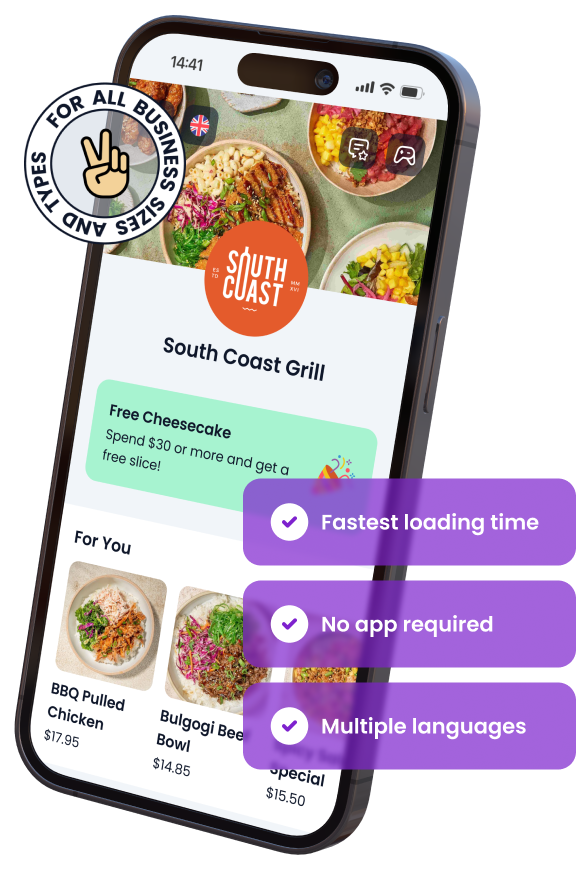
In This Article

Free AI Tools for Restaurants
TRY NOW ➜
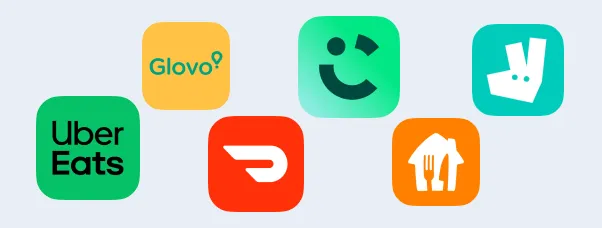
Add your food delivery app links
Make it easy for customers to find your restaurant by adding direct links to popular food delivery apps.


